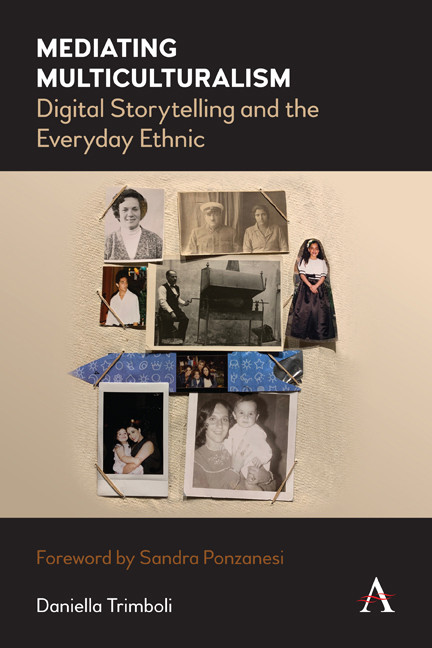Chapter Five - Harmonising Diverse Voices: Ethnic Performativity in Collaborative Digital Storytelling
Published online by Cambridge University Press: 21 August 2020
Summary
In December 2005 there was a riot in Cronulla, New South Wales. This put the Sutherland Shire on the international map, causing shock and heartache for Australians across the country. JUNK THEORY was a forward-looking response to the shock and hurt in the community that aimed to prove it's harder to hurt someone when you know their story.
– Promotional statement for Junk Theory (Big hART 2007)This Sunday every fucking Aussie in the shire, get down to North Cronulla to help support Leb and wog bashing day […] Bring your mates down and let's show them this is our beach and they’re never welcome back.
– Text message sent to hundreds of mobile phones in the Shire region between 5 and 11 December 2005 (Four Corners 2006)Created by the Australian arts-for-social-change company Big hART in response to the 2005 Cronulla race riots, Junk Theory (JT) provides an example of how a single digital story can be produced by a community and represent certain unexpected notions of multiculturalism and nationhood, in this case, Australianness. While JT is somewhat different from the conventional digital story, it fits within the medium because of key defining factors. These factors include: facilitation of digital skills’ workshops, the collection and use of personal artefacts (e.g. photographs), audio narration and the use of certain kinds of timing, sequence and silence that have come to be recognised as digital storytelling techniques. Whereas digital storytelling projects commonly involve individuals producing their personal stories in isolation, this project merged the participants’ individual creative outputs and stories together to form an overall digital story, approximately 60 minutes long, that became a centrepiece of a moving media installation. How these individual digital stories were collected and framed as an overarching text is a useful exercise that explores how notions of community and diversity are negotiated to coalesce in collaborative digital storytelling projects.
Most community-based arts projects set the stage for ethnic performativity quite clearly, driving the work with particular aims and outcomes. Although it is clear that the JT project wanted to tell the story as told by community members and empower different voices, it is important to consider how this storytelling process was mediated.
- Type
- Chapter
- Information
- Mediating MulticulturalismDigital Storytelling and the Everyday Ethnic, pp. 95 - 112Publisher: Anthem PressPrint publication year: 2020



